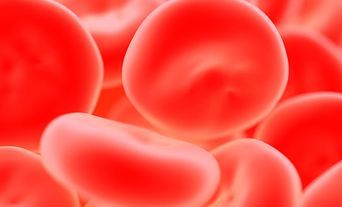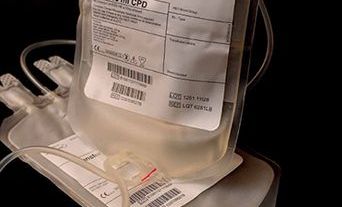We are delighted with the articles received for this issue. They are superb examples of topics where progress has been made but equally where many challenges lie ahead.
Digital pathology
The first article, by Darren Treanor, who is the College’s Digital Pathology Lead, summarises experience in this essential field over the last five years. Is the aphorism ‘Digital pathology is the future, and it always will be’ actually applicable to current real-world practice? There were significant successes in the mid-1990s in developing technology to capture whole-slide images (WSI) but its translation into viable clinical tools has been slow and is only now gathering real pace.
It is pleasing to hear that deployments of digital pathology are growing rapidly and that the NHS is poised to be a leader in the real-world use of WSI. The College published its Digital pathology strategy in 2019 with priority areas for activity around education, training and research, excellence in practice, increasing the College’s influence and resourcing the future.
Investment in research is essential to help support further understanding of pathogens to inform best practice and public health measures...
The College’s Digital Pathology Committee is tasked with the deployment of this strategy. It is supported by experts with practical experience of digital pathology in their own laboratories, representatives of various College functions (training, exams and subspecialties) and key stakeholders including NHS Digital and the Institute of Biomedical Science. Artificial intelligence (AI) has made huge leaps forward with significant potential to improve healthcare, but this also needs further investment. The College has much to do, with support from its members, in promoting the safe and effective adoption of WSI and AI for patient benefit.
Monkeypox
The second article is by Dr Carlos Maluquer de Motes, Reader in Molecular Pathology, who alerts us to the thousands of cases of monkeypox that have been identified outside the African continent. More recent spread has been in individuals with no clear links with endemic countries. Genomic sequence analysis has allowed mapping with comparison with the previous outbreak from 2018.
The number of confirmed cases has now dropped and recent surveys have suggested a possible beneficial effect of vaccination campaigns and targeted information campaigns influencing behaviour. However, uncertainty over population behaviour and further pathogen evolution emphasises the need to remain vigilant. The emergence of monkeypox virus adds to a growing list of viruses able to jump from animals to humans reaching wider geographical areas. Investment in research is essential to help support further understanding of these pathogens to inform best practice and public health measures beneficial not just to endemic countries, but also globally.
Pathology has a key role in improving patient outcomes, reducing length of stay and tackling antimicrobial resistance.
Blood culture pathways
Rosemary Stevenson and colleagues from NHS England rightly emphasise that improving the blood culture pathway is a global issue with scope for the NHS to take the lead in setting standards. Previous surveys have highlighted the opportunities to improve patient care, encouraging laboratories to monitor end-to-end processes as markers of overall quality. Diagnostic laboratory services continue to face financial, workforce and operational constraints.
The authors highlight that pathology has a key role in improving patient outcomes, reducing length of stay and tackling antimicrobial resistance. However, this requires a multidisciplinary team approach, targeted education and appropriate governance with a robust framework to audit, monitor and report on performance against stringent standards.
NHS Blood and Transplant
Vicki Chalker has recently started in the new role of Chief Scientific Officer to NHS Blood and Transplant (NHSBT). She emphasises her humble beginnings but has clearly overcome much adversity with a rich and varied career as a scientist in the public and academic sectors for two decades, including at the UK Health Security Agency, before taking up her latest post. She is looking forward to working at NHSBT, which has a ‘complex scientific and clinical workforce, with specialists in organ donation, tissues, blood, molecular biology, biobanking, biomedical engineering, transfusion and much more’.
The impact of health inequalities on those needing blood, organ and tissue donations is a clear reminder of the need for increased efforts to ensure wider deployment of technologies such as genomics for accurate and rapid matching of donors and recipients for equitable care. There is also a need to work with academia and industry towards scientific innovation with improved digital and data-sharing systems underpinned by a ‘sustainable, future-proofed workforce’.
The impact of health inequalities on those needing blood, organ and tissue donations is a clear reminder of the need for increased efforts...
The UK Transfusion Laboratory Collaborative
Kerry Dowling and colleagues have provided a timely review of the UK Transfusion Laboratory Collaborative (UKTLC). They demonstrate the benefits of collaborating with multiple professional organisations in identifying issues in hospital laboratories and effecting change that will benefit many patients across the NHS who need transfusion.
The UKTLC has responded to errors and shortfalls identified in laboratory practice with the development of targeted standards with updates as needed. There are now renewed efforts to increase awareness with tools provided to support education and ongoing monitoring and gap analysis.
Blood shortages and amber alerts
Last, but certainly not least, Lise Estcourt has described the so far unprecedented event of national shortages leading to NHSBT invoking an amber alert. There were multiple contributory factors including low blood stocks following the COVID-19 pandemic leaving little resilience. This was compounded by staff shortages that affected the ability to collect blood donations set against the background of changes in donor behaviour with reduced attendance at many city centre donor centres.
The widespread call for action resulted in extremely helpful responses. Hospitals, with support from the relevant medical royal colleges and professional societies, responded by applying appropriate use guidance with significant increased use of alternatives to red cell transfusion including tranexamic acid prior to major surgery, use of iron therapy and use of red cell salvage where indicated, together with restrictive transfusion thresholds.
Combined with reduced stockholding, these measures led to an overall decrease in blood demand by around 20%. Blood donors responded to the call to donate with appointments being rapidly filled. This led to the amber alert ending on 8 November 2022, moving into a pre-amber status with ongoing scope for continuing learning to build resilience against future shortages.
These are just a small sample of articles reflecting the huge efforts of all pathologists and allied teams. We would be keen to hear from so many more of you for contributions to future issues.




